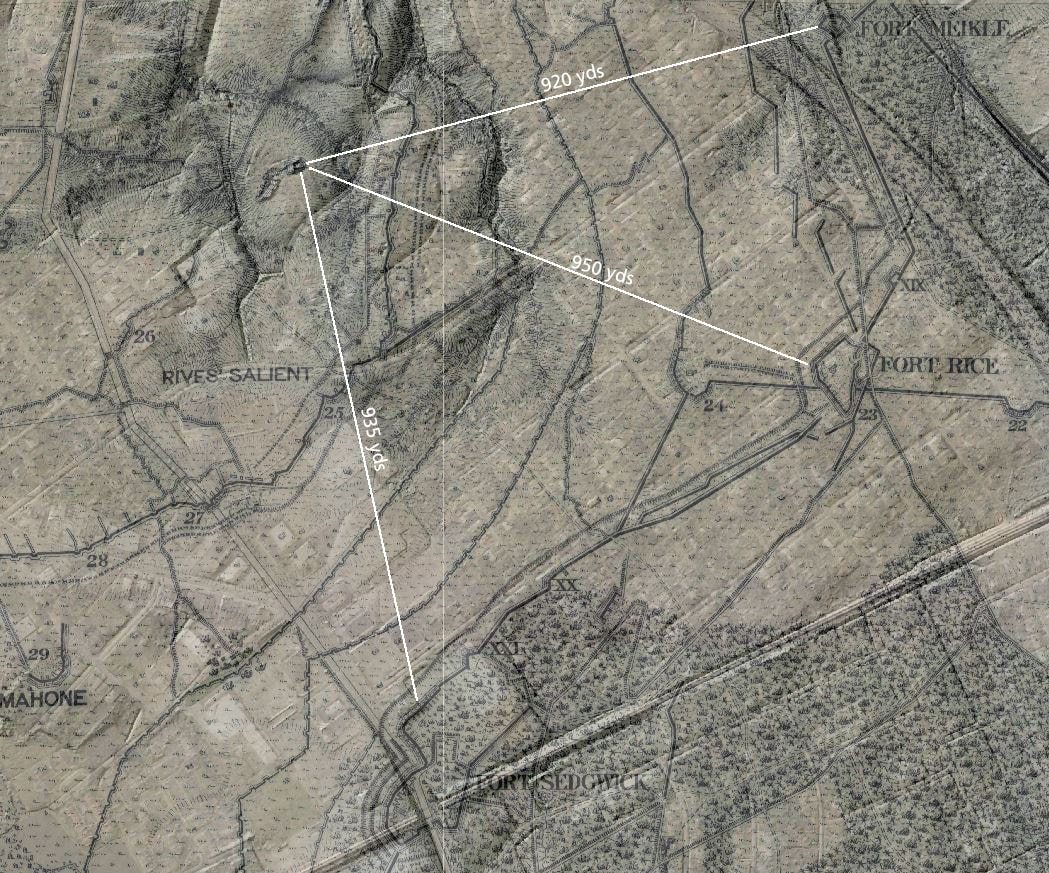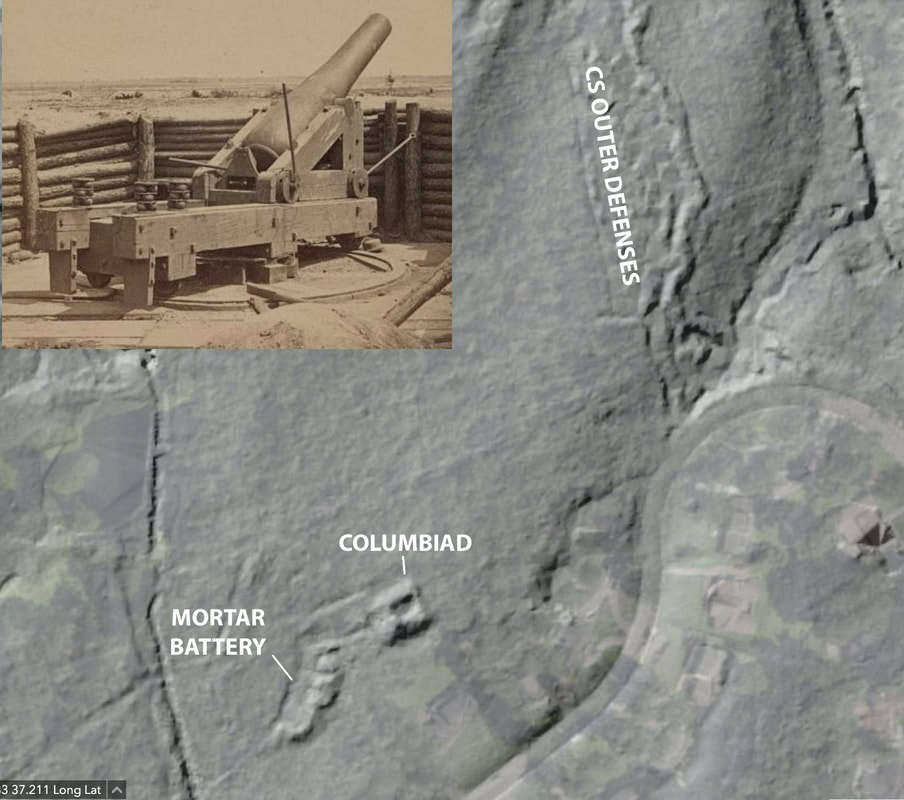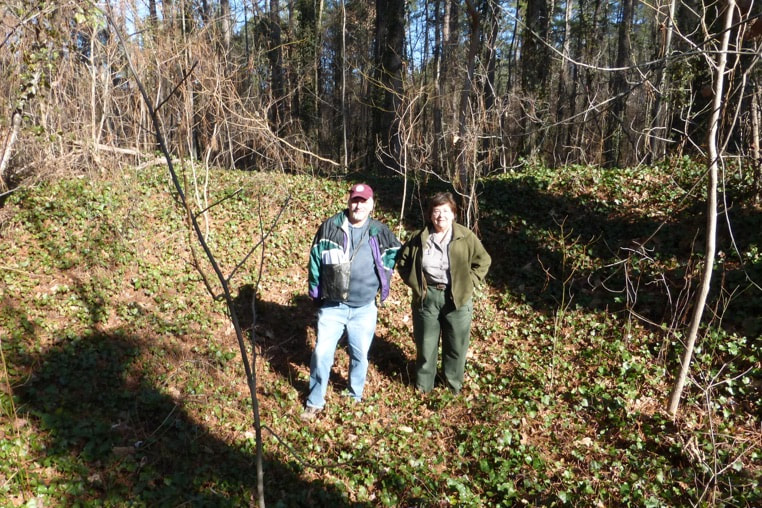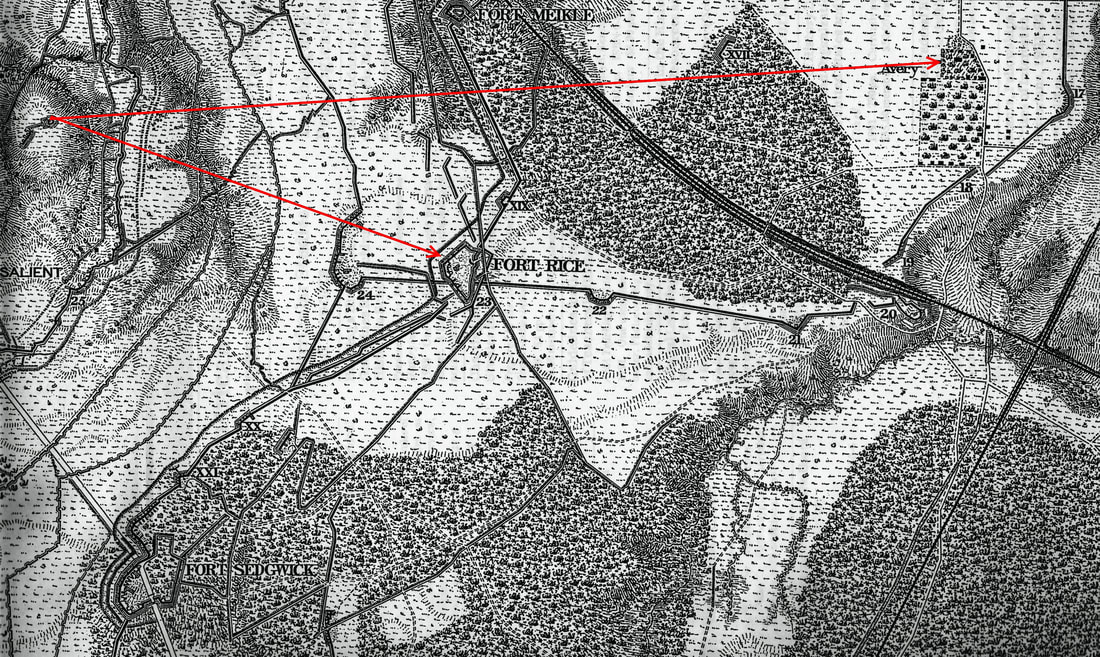Confederate 8-inch Columbiad
"And at the Avery house, a residence of about the same length of time resulted in the same experience, although this house was less prominent. In October the enemy placed in barbette an 8-inch Columbiad directly opposite this house under the cover of darkness, but kept it there only three days, during which it was fired but once or twice. The first shell thrown from it fell directly in the door-yard in front of the house and by a piece of good fortune failed to explode.”
William R. Driver, "Siege of Petersburg After the Capture of the Weldon Railroad," in Papers of the Military Historical Society of Massachusets, vol. 5 (1906), 312-313
William R. Driver, "Siege of Petersburg After the Capture of the Weldon Railroad," in Papers of the Military Historical Society of Massachusets, vol. 5 (1906), 312-313
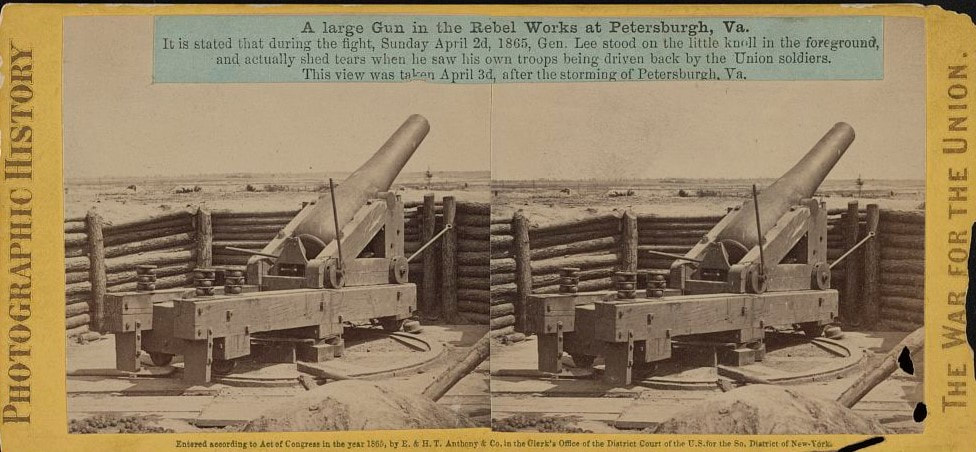
LC 1s02632. A Large Gun in the Revel Works. "It is stated that during the fight, Sunday April 2d, 1865, Gen. Lee stood on the little knoll in the foreground, and actually shed tears when he saw his own troops being driven back by the Union soldiers. This view was taken April 3d, after the storming of Petersburgh, Va." Imprint by E & H.T. Anthony. Stereo card of the above image. Roche was working on commission for the Anthonys at this time.

